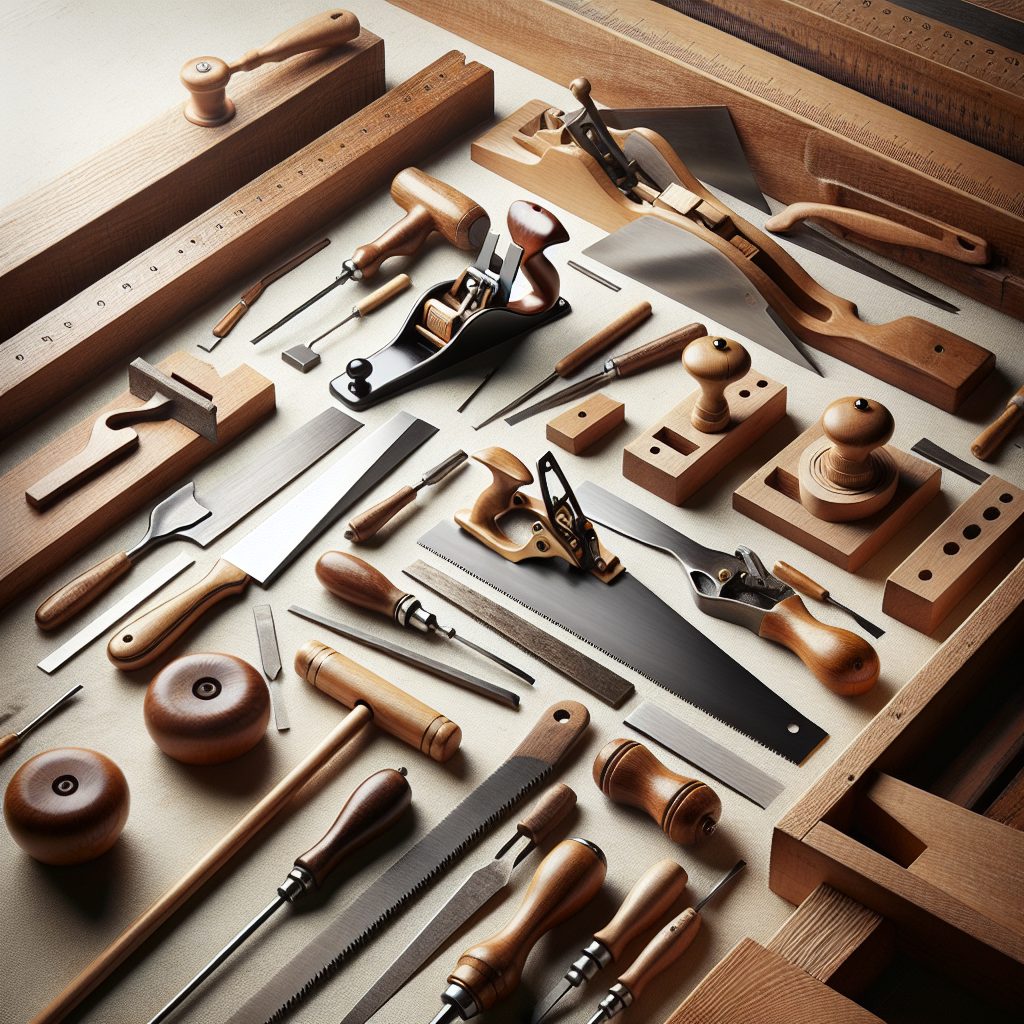In a world dominated by fast-paced technology and mass production, the charm of traditional woodworking and the art of hand tools remain remarkably relevant. These crafts evoke a sense of nostalgia and appreciation for the time-honored techniques that have been passed down through generations. While power tools have their place, the tactile experience of working with hand tools fosters a deeper connection to the material and the craft itself.
The Importance of Hand Tools in Woodworking
Hand tools are not merely relics of the past; they serve essential functions in the woodworking process. Each tool, whether it’s a chisel, a hand plane, or a saw, offers unique capabilities that can enhance precision and creativity. For instance, using a hand plane allows woodworkers to achieve a level of smoothness and finish that is often difficult to replicate with power tools. The control and feedback provided by hand tools can lead to a more satisfying and successful project.
Moreover, the use of hand tools encourages a mindful approach to woodworking. As artisans engage with their materials, they develop a keen understanding of wood grain, density, and texture. This hands-on interaction cultivates a sense of respect for the natural materials being used. It also allows for a more sustainable approach to woodworking, as it aligns with practices that prioritize eco-friendly choices. For those interested in such methodologies, exploring sustainable woodworking can be enlightening.
The Connection Between Craftsmanship and Mindfulness
Engaging in traditional woodworking with hand tools can be a meditative experience. The rhythmic motions of planing, chiseling, and sanding promote a state of flow, where the woodworker becomes fully immersed in the task at hand. This mindfulness not only enhances the quality of the work but also provides a mental respite from the hustle and bustle of everyday life. As artisans focus on their craft, they often find a sense of peace and fulfillment that is hard to achieve in our technology-driven society.
Additionally, the satisfaction derived from creating something with one’s own hands is unparalleled. Each finished piece is a testament to the skills honed over time and the dedication invested in the craft. This personal connection to the work fosters a sense of pride and accomplishment that is often missing in mass-produced items. Woodworkers can truly appreciate the beauty of their creations, knowing that they have poured their heart and soul into every project.
In the realm of woodworking, the use of hand tools remains a cherished practice among artisans and hobbyists alike. While modern machinery has transformed the industry, traditional hand tools continue to hold a significant place in the hearts of many woodworkers. This enduring passion is not merely nostalgic; it reflects a profound appreciation for craftsmanship, skill, and the tactile experience of working with wood.
The Connection Between Craftsmanship and Hand Tools
Hand tools serve as an extension of the woodworker’s skill, allowing for a personal connection to the material. Each tool, from chisels to hand planes, is designed to perform specific tasks with precision. This level of control fosters a deeper understanding of the wood itself, enabling artisans to appreciate its unique grain, texture, and behavior. The tactile feedback provided by hand tools enhances the woodworking experience, allowing for adjustments and refinements that machinery simply cannot replicate.

The process of shaping wood with hand tools is often meditative, providing a sense of calm and focus that many find therapeutic. Unlike the rapid pace of power tools, hand tools encourage a slower, more deliberate approach to woodworking. This method allows woodworkers to immerse themselves in their craft, leading to a greater sense of satisfaction and accomplishment in their finished projects. By engaging in this traditional practice, artisans not only hone their skills but also cultivate a deeper respect for the materials they work with.
Preserving the Art of Traditional Techniques
As woodworking continues to evolve, the preservation of traditional techniques becomes increasingly important. Many woodworkers recognize the value of learning classic joinery methods, such as dovetails and mortise and tenon joints. These techniques, often executed with hand tools, not only enhance the structural integrity of projects but also add a layer of artistry that modern methods may overlook. By mastering these skills, woodworkers can create pieces that are not only functional but also timeless in their beauty.
Furthermore, the resurgence of interest in handmade furniture and custom woodworking has led to a renewed appreciation for the craftsmanship involved in traditional woodworking. As consumers seek unique, high-quality pieces, the demand for artisans skilled in hand tool techniques has increased. This shift in consumer preferences underscores the importance of maintaining these skills and sharing knowledge with the next generation of woodworkers.

For those looking to deepen their understanding of traditional woodworking, exploring resources on specific techniques can be invaluable. For instance, diving into diy wood joinery can provide insights into the craftsmanship that goes into creating strong, lasting joints. By embracing these techniques, woodworkers not only preserve a rich history but also contribute to the ongoing evolution of the craft.
As we wrap up our exploration of traditional woodworking and hand tools, it becomes clear that the art of working with wood is not merely a craft, but a deeply rooted tradition that fosters connection to our past. This connection is vital in an age dominated by mass production and digital convenience. Embracing traditional woodworking techniques allows us to appreciate the nuances of craftsmanship and the satisfaction that comes from creating something with our own hands.
The Timeless Value of Craftsmanship
Craftsmanship is a celebration of skill and patience, qualities that are often overlooked in our fast-paced world. When we engage with hand tools, we are not just manipulating materials; we are participating in a dialogue with history and nature. Each cut, carve, and joint reflects a commitment to quality that mass-produced items simply cannot replicate. The tactile experience of shaping wood with hand tools is a sensory delight, anchoring us in the present moment and fostering mindfulness.
Moreover, traditional woodworking encourages a deeper understanding of the materials we use. By learning to work with wood, we become attuned to its characteristics—its grain patterns, density, and how it responds to different tools and techniques. This knowledge enriches our creations, allowing us to make informed choices that enhance both functionality and aesthetic appeal. Such an approach not only leads to better projects but also nurtures a respect for the resources we consume.

Building Community Through Woodworking
Hand tools and woodworking also have the power to build community. Workshops, classes, and maker spaces often bring together individuals from diverse backgrounds, united by a shared passion for creating. These gatherings foster collaboration and mentorship, where seasoned woodworkers can pass down their knowledge to novices. This exchange of ideas and techniques not only preserves the craft but also strengthens community bonds.
In addition, engaging in woodworking can be a source of personal fulfillment. The journey from raw wood to a finished piece is a rewarding process that instills confidence and a sense of accomplishment. As we navigate challenges and celebrate successes in our projects, we cultivate resilience and problem-solving skills. The joy of seeing a project through from start to finish is unparalleled and reinforces the value of dedication and hard work.
For those looking to improve their skills, understanding common woodworking mistakes can be incredibly beneficial. Learning from these missteps not only enhances our skills but also transforms challenges into opportunities for growth. This mindset is essential in woodworking, where trial and error often lead to the most significant leaps in craftsmanship.
